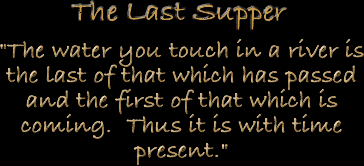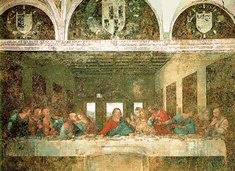
When Leonardo was commissioned to paint a picture of the Last Supper on a chapel wall, he decided to break artistic conventions of the time and try new techniques and compositions. In addition to choosing to paint in tempura , rather than traditional fresco, Leonardo also focused on the facial expressions of each of the 12 disciples, at the exact moment when Christ announced that one of them would betray him, to depict Judas.
Leonardo used one point perspective, which involves all the lines in the painting converging in one place, known as the vanishing point. This strategy was used to emphasize the importance and central position of Christ. The lines all converge in his right eye, drawing the viewers gaze to this place. Students will learn how to compose art using one-point perspective to show three dimensional images on a two-dimensional plane. Angles and measurement become valuable tools in this process. This unit will also relate back to Mona Lisa in looking at the symmetry of the composition and groupings of the disciples.
